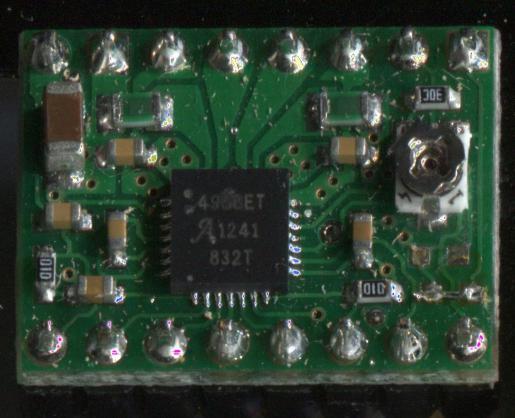Hi,
I have a 2.5A 3.1V motor. I have a 12V powersupply, and inbetween those is an A4988 stepper driver from Pololu.
I’ve been testing my software, and I’m able to make the motor run say 1 rotation or 10 rotations. No problem. But the motor vibrates a bit more than what I’d expect from a microstepping driver. So now I’m investigating, and when I issue one microstep at a time, 15 of them result in a very small “tick” on the axis. I can’t be sure if it actually moves. Then on the 16th step the motor moves a really significant amount.
I’ve set the current limit voltage Vref at 0.37V for a current limit of almost 1A. I then found the A4988 to run too hot for my taste, so I’ve turned it back down again a bit.
My Microprocessor is an STM32F4 board. It runs at 3.0V. Hmm. OK. When I measure the 3.0V powersupply it comes to about 2.96V. The A4988 datasheet mentions a minimum of 3.0. So I’m off to solder a 3.3V regulator on my board. But I don’t expect that to change anything.
Any suggestions?
Update: The LM1085 has a dropout of 1.3V. Should JUST be enough for the 5V to 3.3V, right? Nope: the 5V on the STM32F4 board is only 4.5V because it has a series diode. My SPX1117 goes in current limit at 1.4V or something like that. The A4988 becomes hot. OK. New Pololu board, seems to leave the power at the intended value.
Update2: The Pololu now runs at 5V, same issue.
Update3: I’ve measured the steps: they start out really really small, then become slightly larger before the big step. Then they start out really small again. Watch it for yourself: prive.bitwizard.nl/MOV05295.MPG

 (as far as I can see, those motors are a good price/performance tradeoff at lots of places around the internet. So more and more people are going to have those motors!).
(as far as I can see, those motors are a good price/performance tradeoff at lots of places around the internet. So more and more people are going to have those motors!).